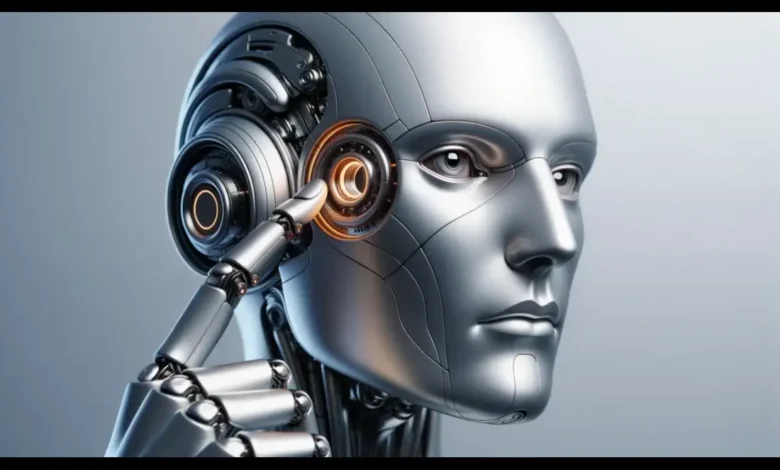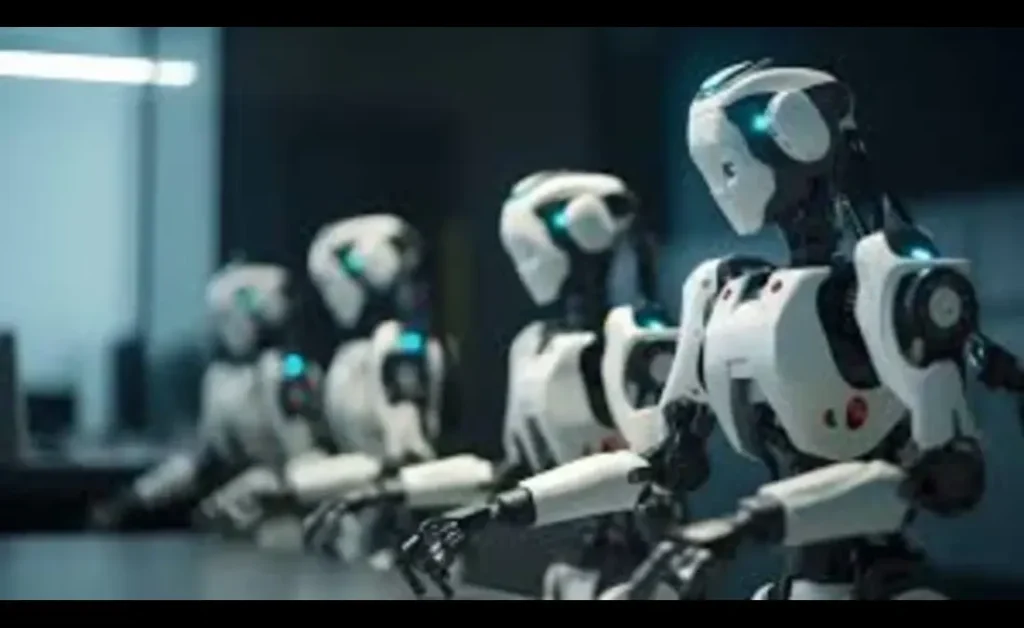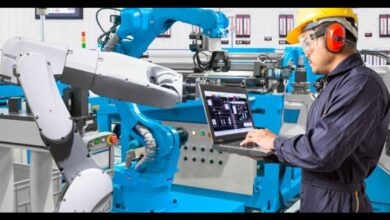Robots Dot to Dot Nattapong: The Fascinating World of Robotics

The world of robotics has been steadily advancing, impacting various sectors, from industrial production to personal assistance. Among the many innovations, a specific concept that has captured attention is the “Robots Dot to Dot Nattapong” framework. This approach, often associated with interactive learning and visual representations, is gaining prominence in the field of educational robotics. The term “Nattapong” introduces an interesting element to this concept, further pushing the boundaries of how robots interact with humans and the environment. In this article, we will explore the “robots dot to dot Nattapong” concept, how it fits into the broader landscape of robotics, and what makes it a unique development in the field.
Understanding Robots: Dot to Dot and Nattapong
Before diving into the specifics, it’s essential to first understand the meaning of “dot to dot” and the role of Nattapong in robotics. The term “dot to dot” refers to a visual or drawing-based learning technique that connects a series of dots to form a picture. This technique has traditionally been used in children’s activity books to help them develop fine motor skills and hand-eye coordination. However, when applied to robots, this approach takes on a much more dynamic and interactive form.
In the context of robotics, the “dot to dot” method involves robots following predefined paths or patterns to complete tasks, such as connecting dots or navigating through a maze. This interaction can be used in educational settings to teach programming, problem-solving, and basic robotics principles. The idea is to program robots to follow the dots, mimicking the learning process similar to how a child might connect the dots to reveal an image.
Nattapong, on the other hand, refers to a concept or individual associated with innovation in robotics. While “Nattapong” may not be a widely recognized term in the global robotics field, it has been linked with advancements in making robots more interactive and capable of solving complex problems. The fusion of “dot to dot” with Nattapong’s vision in robotics represents a unique and forward-thinking approach to the development of intelligent systems capable of more engaging and effective learning experiences.
Robots in Education: A Bridge to the Future
One of the most significant applications of robots, particularly when combined with methods like “dot to dot,” is in education. Robots provide an interactive way for students to learn concepts such as mathematics, science, programming, and even art. For example, through dot-to-dot drawing exercises, robots can teach students how to follow a series of steps to complete a task. These exercises can be programmed into educational robots, allowing them to act as both teachers and assistants.
In a classroom setting, robots using a dot-to-dot approach can guide students through tasks in a visual and hands-on manner. This is particularly beneficial for younger students who may find abstract concepts difficult to grasp. By physically interacting with robots, students develop both problem-solving and critical thinking skills. Robots also provide a way for students to engage in STEM (Science, Technology, Engineering, and Mathematics) learning that is both fun and educational.
The Role of Nattapong in Advancing Robotic Learning
The influence of Nattapong in the development of educational robots cannot be understated. While specific details about Nattapong’s contributions may vary depending on the source, one thing is clear: their vision focuses on creating robots that foster more interactive, adaptive, and intelligent learning systems.
Nattapong’s approach to robotics combines human-centered design with technological advancement. This means creating robots that not only perform tasks but also engage with users in meaningful ways. For instance, educational robots programmed with “dot to dot” tasks could adjust their responses based on how well a student is progressing, offering personalized feedback or changing the complexity of the challenge to better suit the learner’s needs. This adaptive approach is crucial in creating robots that can be used across various educational levels, from elementary schools to higher education institutions.
Additionally, Robots Dot to Dot Nattapong focus might include the integration of artificial intelligence (AI) and machine learning, enabling robots to better understand and respond to a user’s actions. This makes the “dot to dot” method even more effective, as the robot can tailor the learning process to individual students. The combination of robotics and AI creates an environment where robots become more than just tools; they transform into educational companions.
The Technology Behind Robots Dot to Dot Nattapong
The development of robots that can perform dot-to-dot activities and more advanced tasks requires a deep understanding of various technologies, including robotics hardware, software programming, and AI. Robots are typically equipped with sensors, motors, and cameras that allow them to interact with their environment. These sensors help the robot follow the dots or navigate a predefined path, while motors allow the robot to move accurately and efficiently.
The software behind these robots is equally important. For robots to perform dot-to-dot tasks, developers must program them to recognize the positions of the dots and plot a course between them. In some cases, machine learning algorithms are employed to help the robot “learn” the most efficient way to complete the task.
AI plays a crucial role in making the robots adaptive to individual users. For example, using real-time data from sensors, a robot can assess a student’s skill level and adapt its behavior accordingly. If a student is struggling, the robot might slow down or offer hints, while more advanced learners can be given more challenging tasks.

The fusion of these technologies is essential for creating robots that can seamlessly integrate into the learning environment, making the “dot to dot” method even more engaging and effective.
The Educational Benefits of Robots Dot to Dot Nattapong
Using robots for “dot to dot” tasks offers several educational benefits. First, it makes learning more interactive. Traditional methods of teaching often involve passive learning, where students are expected to absorb information without active engagement. With robots, students become active participants in the learning process, as they are required to program and interact with the robot.
Second, the use of robots can help develop essential 21st-century skills. In a world that is increasingly driven by technology, students who learn how to interact with robots and understand basic programming principles will be better prepared for future careers. Robots offer a unique way to teach coding, problem-solving, and logic, which are all critical skills in today’s job market.
Third, robots are highly adaptable, meaning they can cater to a wide range of learning styles. Some students may excel in visual learning, while others may prefer hands-on or auditory methods. Robots can incorporate multiple learning styles into their programming, offering a tailored educational experience.
The Future of Robots in Education: What Lies Ahead?
Looking ahead, the future of robots in education is incredibly promising. As technology continues to evolve, robots will become even more integrated into the learning experience. In particular, the combination of AI, robotics, and learning techniques like “dot to dot” will create more intelligent, adaptive, and engaging educational tools.
One area to watch is the continued development of personalized learning. As robots become more adept at understanding student behaviors and preferences, they will be able to offer even more customized learning paths. This will make education more accessible to students with different needs and learning speeds, ensuring that all students have the opportunity to succeed.
Furthermore, advancements in robotics will make it possible for robots to take on more complex roles within education. Rather than just assisting with tasks, robots may become co-teachers, helping educators manage classrooms, deliver content, and provide individualized support to students.
Conclusion
The concept of “robots dot to dot Nattapong” represents an exciting intersection of robotics, education, and innovation. Through the use of robots that follow predefined patterns, students can engage with learning in a more interactive and dynamic way. With Nattapong’s contributions pushing the boundaries of robotics, we can expect to see even more personalized, adaptive, and intelligent robots that revolutionize education as we know it.
As the world continues to embrace technology in various fields, the integration of robots into classrooms will provide invaluable benefits for students, helping them develop the critical skills necessary for success in the 21st century. The future of educational robots is bright, and with the “dot to dot” approach, we are just beginning to scratch the surface of what is possible.







